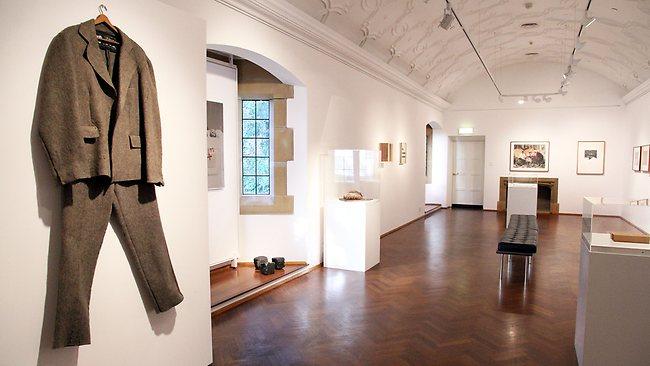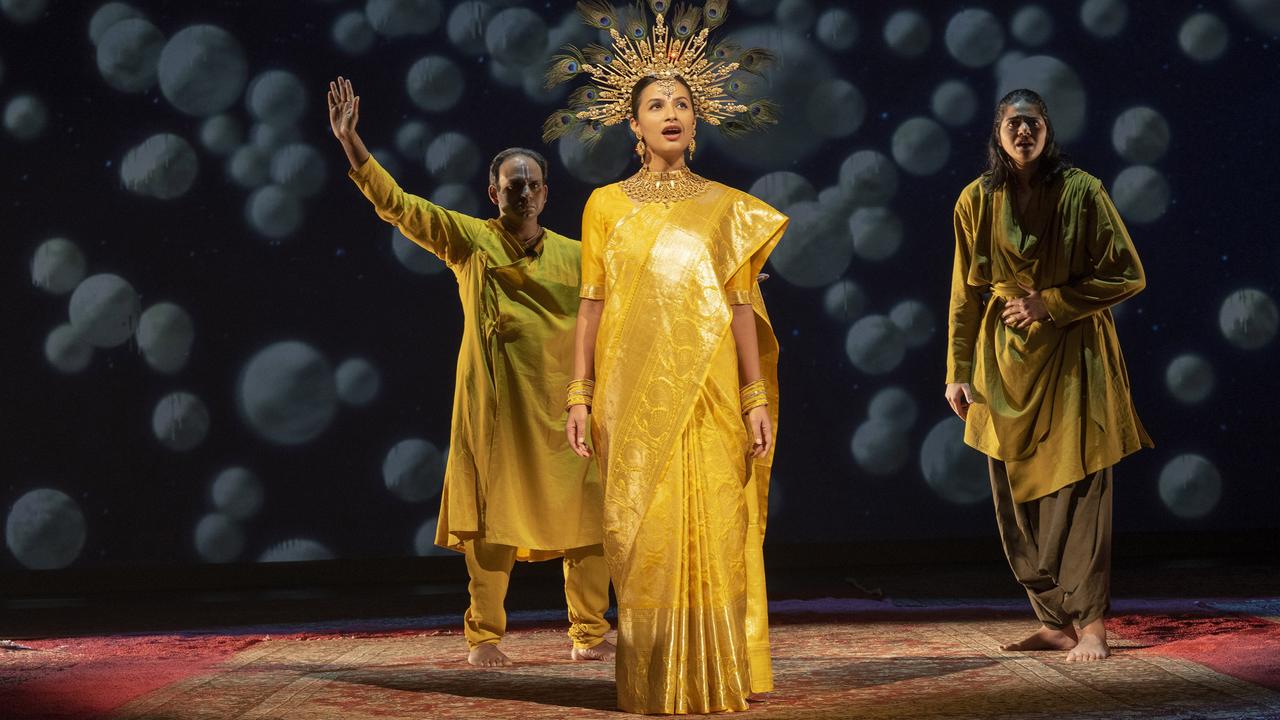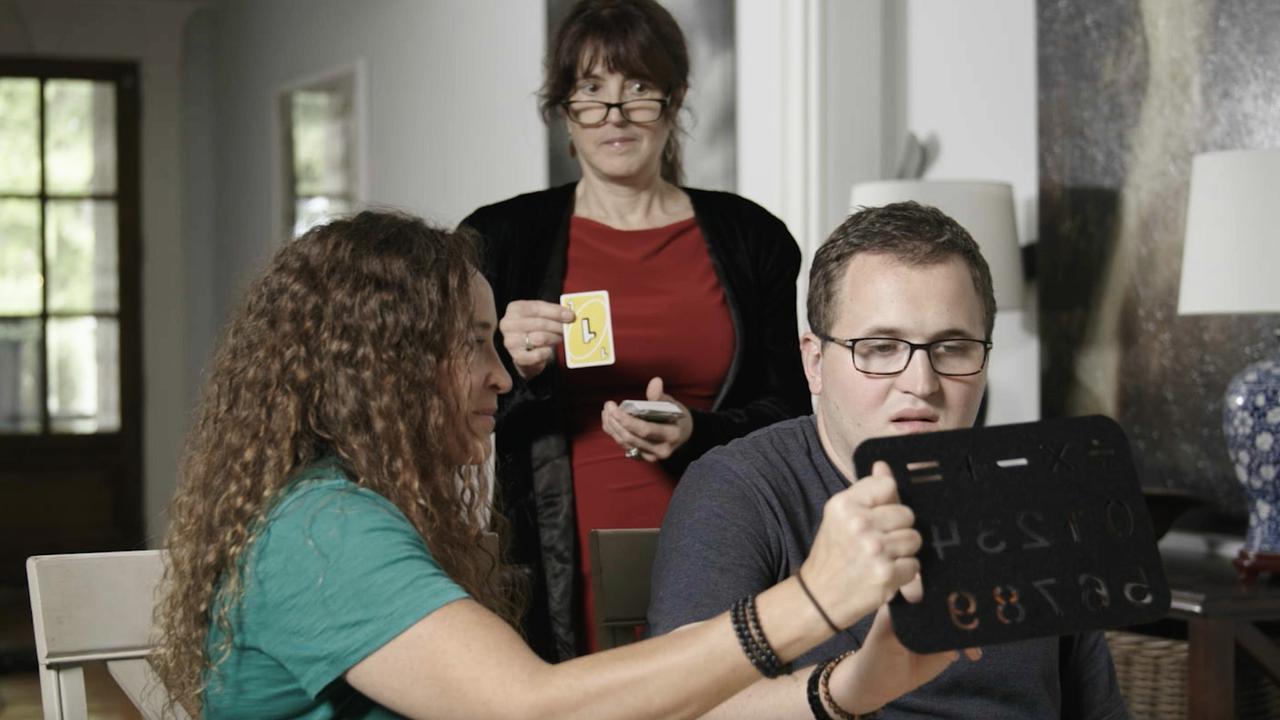Artist Joseph Beuys made good use of market forces
THE selection of Joseph Beuys's work on display at the University of Sydney Art Gallery shows his unerring instinct for marketing.

ONE of the many ironies in the career of Joseph Beuys (1921-86) was his appointment, in 1961, as professor of monumental sculpture at the Academy of Duesseldorf.
Perhaps by then, and especially in a Germany still recovering from the catastrophic experience of Hitler's regime and the extraordinary destruction of its cities in the war, there was not much call for large stone and bronze sculptures. The country was divided into East and West and would not be reunited in Beuys's lifetime; and 1961 was the year in which that partition reached a crisis with the building of the Berlin Wall.
In this now distant world of the Cold War, Beuys's work was the opposite of monumental in the usual sense of the word. He made many elusive and idiosyncratic drawings, eccentric assemblages and inexpensive multiples, a selection of which, acquired for the Power Collection by its then curator - and for many years my predecessor in this column - Elwyn Lynn, are now exhibited at the University of Sydney Art Gallery.
Many of these items, in reality almost ephemera, relate to the performances for which Beuys was best known. In one of the most famous, he sat for some hours whispering observations about his drawings to a dead hare cradled in his arms: the performance, or action, was titled How to explain pictures to a dead hare (1965). In another, I like America and America likes me (1974), he flew to New York, was taken to the Rene Block gallery in an ambulance and spent part of the next three days in a room with a wild coyote, before flying back to Germany.
In the context of 20th-century art, Beuys's work is clearly related to other manifestations of discontent with the post-war art market, dominated by big and expensive abstract expressionist paintings. The pretensions of Beuys, however, is fundamentally different from Duchamp, whose work is cynical if not nihilistic. Indeed if Duchamp has a place in the history of art, it is not because he has provided the excuse for a thousand talentless artists to pass off their own variations on the readymade as art, but much more importantly because he is an embodiment of negation in the Hegelian sense, in which it acts as the antithesis in the dialectic of history.
Duchamp's role in the process is comparable to that of the advocatus diaboli, the devil's advocate, originally the cleric charged with arguing the negative case in a process of canonisation and who thus helps ensure the integrity of the final outcome. Beuys, on the other hand, was a self-proclaimed shaman concerned to restore a sense of life, mystery and even mysticism to a disenchanted, materialistic and utilitarian world.
In this respect, his deepest roots lie in German romanticism, with its love of the earth, of the organic life of nature and the irrational, spontaneous energy of animals. Hence the importance of these creatures in Beuys's most famous performances. The hare, with its ancient magical and erotic connotations, appears to be more connected to the heartbeat of the natural realm, even when dead, than modern man in the bland world of industry and mass consumerism. The wild coyote represents the spirit of the American land more intimately than any of its human inhabitants.
This German romanticism and irrationalism had reached a crescendo in the expressionist and abstractionist movements before World War I: all of these artists were involved with various mystical and spiritualist beliefs, and concerned to express what they thought of as a deeper truth than the one revealed to the senses and the rational mind. The irrationalist impulse suffered an important setback when the war reminded us how destructive such instincts can be; but a Germanic form of anti-rationalist vitalism, rooted in ideas of volk and soil, was also exploited, like other elements of German culture, by Nazi ideology.
Beuys had grown up in Nazi Germany and had even been more or less voluntarily enrolled in the Hitler Youth. Later he joined the air force and was based in the Crimea from 1942, eventually receiving a decoration for the many wounds he had sustained. The most famous and controversial event in his biography occurred when his plane was shot down in 1944. According to his later account, he was hurled from the wreckage of the plane into the snow, where he lay until he was discovered by Tartar tribesmen, a people with whom he had already had some contact.
The Tartars covered his wounds in fat and wrapped him in felt blankets and he survived. This experience explains the significance of fat and felt in his subsequent work: they were the materials that had saved his life and which he felt to have a primal, almost magical quality.
The University of Sydney exhibition includes a complete suit made of felt, apparently one of the few examples of this more elaborate multiple that is still in good condition.
The only trouble with this remarkable story is that it appears to be largely fictional, and Beuys has been duly criticised for self-mythologisation. It is not hard, however, to understand the motivation behind this rewriting of his life: the crash certainly happened and it was no doubt a traumatic event.
Perhaps it really did feel like a death and a rebirth of some kind, especially in hindsight. But above all, the story of the Tartars allowed him to re-imagine the experience as the death of the Nazi persona and the rebirth of a new self whose Teutonic imagination had been purified by contact with a more primitive and primal culture.
The word shaman itself pertains to this sort of tradition, but the German quality of the inspiration is unmistakable, especially in relation to trees; another of Beuys's celebrated actions was the planting of thousands of oak trees - of course the tree with the most ancient mystical associations for the Celtic and Germanic peoples - at Kassel Documenta in 1982. And the exhibition includes a well-known image of the artist with a group of followers sweeping a forest with birch brooms as part of an action intended to preserve the area from development.
The element of social and political protest is also pervasive, as a corollary of the assertion of alternative values. The image of Beuys and the others in the forest is a lithographic reproduction of a photograph, and stamped on it in red is a call to end the rule of political parties. The same message is developed in the form of an elaborate diagram on a huge plastic bag, which was another multiple: Beuys urges the abandonment of government by political parties and the adoption of a model closer to direct democracy.
For all this political and social consciousness, mostly intellectually incoherent - and indeed for all the nature mysticism - the first impression one is likely to have on entering the exhibition is of the ubiquity of Beuys's own image. There are photographs of him everywhere, always in the costume he adopted as a kind of uniform: a homburg hat, with a vest in warm weather and an overcoat with a fur collar in winter.
Different as the apparent premises of his art may be, this cultivation of a distinctive public image almost exactly parallels the case of Beuys's slightly younger contemporary Andy Warhol (1928-87), with his platinum wig, dark glasses and nocturnal pallor. Again, the messages are ostensibly almost antithetical, but the medium is disconcertingly similar. Equally striking are the signatures everywhere. Prints and posters are signed; basalt street pavers are signed; documentary photographs of various installations are signed, and even portrait photographs, like the publicity and fan shots of Hollywood beauties and leading men of the same period.
This, of course, was how the anti-commodity artists ultimately got around the difficulty of earning one's living as an artist when one had nothing to sell. They sold vestiges, samples, drawings, models and above all photographs. The work itself may not have been a commodity, but the documentation certainly was; and as we can see, even someone who appears to be a maverick in the world of postwar art, such as Beuys, had an unerring instinct for marketing: no opportunity was lost to create product or to promote the brand.
In the end, what emerged from the anti-art, socially and politically engaged and conceptually oriented art of the 1960s and especially the 70s, was a new kind of art market that would have astounded the artists of a half century ago. Today we have not only international exhibitions such as biennales that are essentially trade fairs for the contemporary establishment, but also art trade fairs that do not even pretend to be anything else.
What no one really wants to acknowledge is that all this activity is hollow at the core. We know that in any given century there may be a handful of great artists; there will be many others who are more or less able, talented, appealing practitioners of styles and idioms established by the great precursors, recent or more remote in time; and finally there is a horde - the majority - who are sub-mediocre, followers of fashion, derivative and vacuous.
But the art market needs the numbers because its business model demands product. It is the wrong business model, since good art is rare, unpredictable and made in tiny quantities. But if there is money to be made, there will be willing hands to churn out the product. With assiduous promotion and marketing by the plausible men and women in their expensive suits, silk purses will be duly spun from sows' ears.
And as for the erstwhile critique of commodification, that has been submerged by the tidal wave of a consumerist culture that generates its own self-serving ideology; hardly a voice today is raised to complain about the use of supposedly avant-garde art as a badge of status for the newly rich or as a vehicle for brand-building by corporations.
Nor does the contemporary art market have any qualms about the abasement of art to an even more squalid level of commodification as a form of investment, the final reduction of art to exchange value.
Joseph Beuys
University of Sydney Art Gallery to June 29



